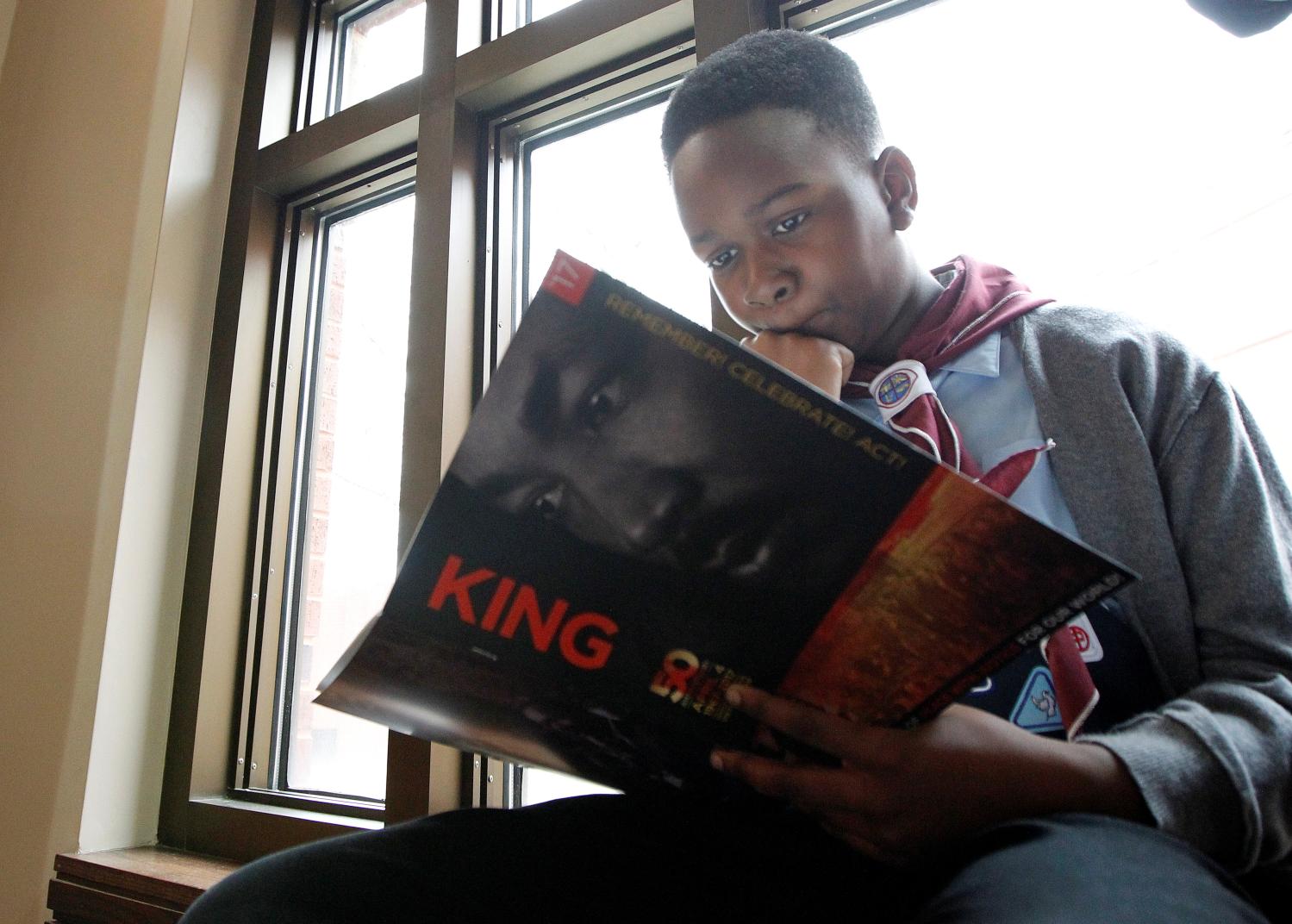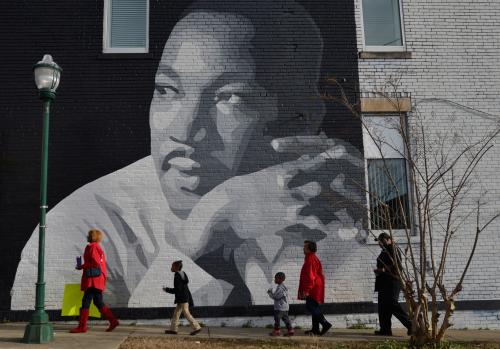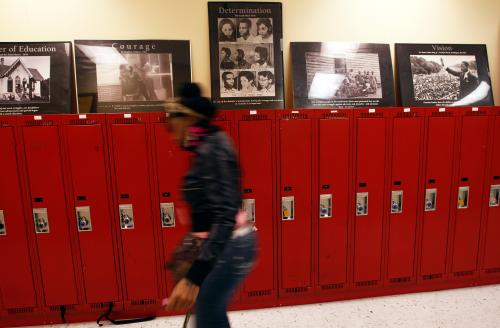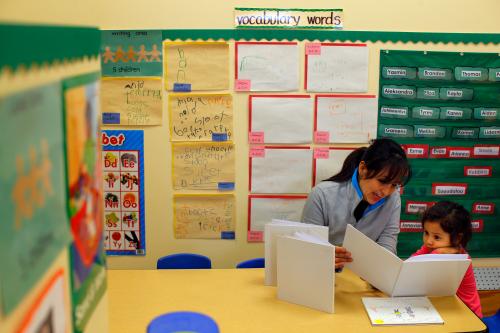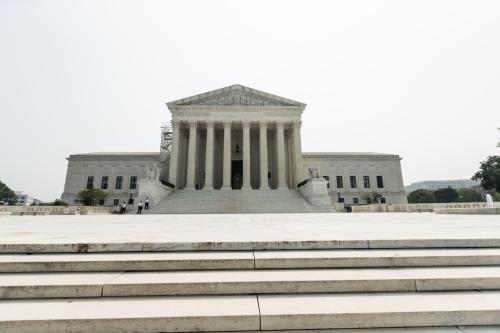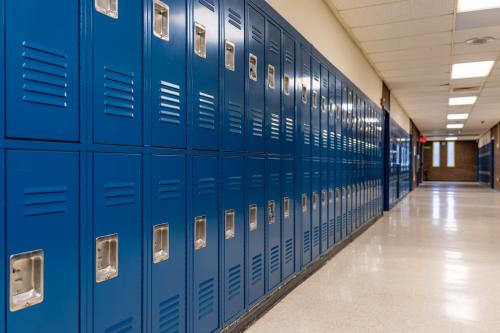Today would have been Dr. Martin Luther King’s 90th birthday had he not been taken from us in 1968. Whatever position one takes on how to deal with America’s racial issues, most people of goodwill ascribe to the idea of equality of opportunity in education. I want to look today at a number of indicators of educational opportunity.
I emphasize educational opportunity, as distinct from educational outcome. Outcomes depend on opportunities offered by schools, on backgrounds that students bring through the school room door with them, and on choices made by those students. I will begin by reviewing a bit of what is known about differences in outcomes, in part because some differences by race are shockingly large. But let me be frank about why I will largely focus on equality of opportunity: There remain a number of people who want to blame the disadvantaged for their situation, and who do so increasingly openly. Consequently, I think it is important to identify circumstances where disadvantage cannot be attributed to the disadvantaged.
I wish to note three background items before we begin. First, the Equality of Opportunity project, led by a team of scholars at Harvard University, offers a wealth of data and analysis on inequality along many dimensions. Second, ProPublica has a nice piece on disparities in outcomes written by Lena V. Groeger, Annie Waldman, and David Eads. Third, I am going to limit my analysis to black/white differentials rather than looking at all disadvantaged groups. Partially this is for simplicity and partially as a reminder of the struggles led by Dr. King. (Though I suspect Dr. King would not agree with my narrow focus.)
Large gaps in outcomes persist by race
Let’s begin with two quotes about findings from the Equality of Opportunity project, as discussed by Raj Chetty and Nathaniel Hendren. First, “The black-white gap is not immutable: black boys who move to better neighborhoods as children have significantly better outcomes.” What’s more is that the researchers are explicit that “environmental conditions during childhood have causal effects on racial disparities, demonstrating that the black-white income gap is not immutable.” The focus here on the Brown Center Chalkboard is education, but as we move on please remember that the educational system is not the only place there are inequities. As Chetty and Hedren write, “In 99% of neighborhoods in the United States, black boys earn less in adulthood than white boys who grow up in families with comparable income.”
While schools are not all that matter, let’s talk about some of the ways that schools do matter. Here is a graphic from ProPublica showing the achievement gap between black and white students across the nation.
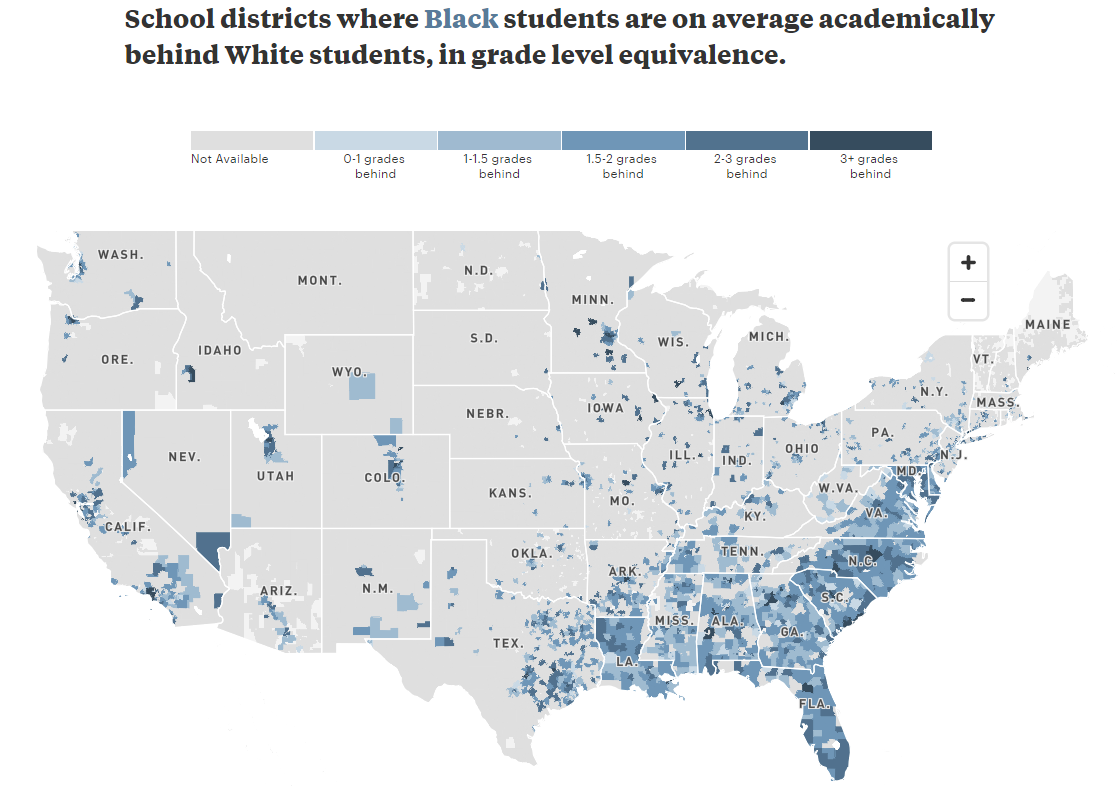
The big visual differences are in the South (still!), which is where Dr. King mostly fought. But the disparities are not just in the South. In LA Unified, the second largest school district in the nation, ProPublica reports, “Black students are, on average, academically 3.1 grades behind White students.” In Chicago, the gap is three grades. (ProPublica lets you check out your own local schools as well.)
Achievement gaps depend on opportunities inside school walls, and also on which groups end up being advantaged by those opportunities. ProPublica looked explicitly at racial gaps in participation in Advanced Placement and gifted programs. If a student isn’t enrolled in one of these programs, she or he can’t very well benefit from the program. Here’s the picture from ProPublica.
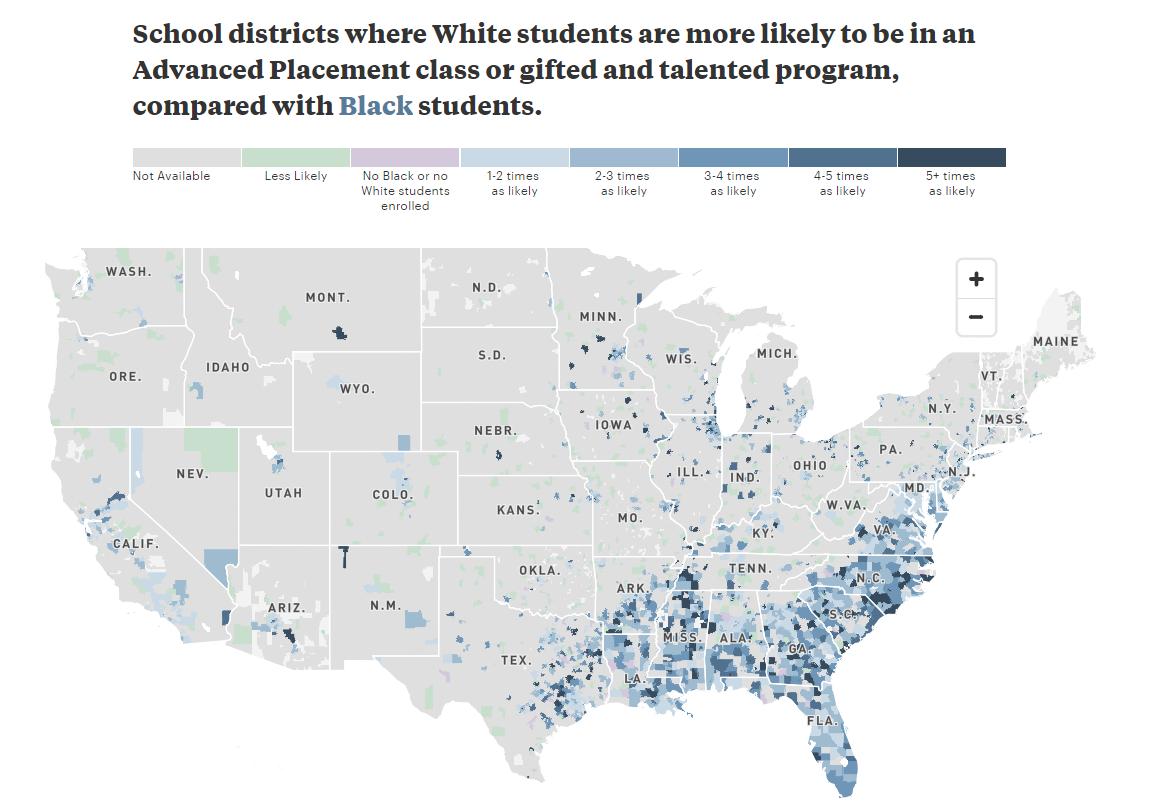
Again the South stands out, but, again, it’s not just the South. In NYC—the nation’s largest school district—white students are two-thirds more likely to be enrolled in AP courses than are black students.
Opportunity gaps underneath the outcome gaps
Still, one could argue that the differences in enrollment in these advanced opportunities reflects something that students bring into school rather than the opportunities that the schools make available. To nail the point that inequality of opportunity is an issue, I want to look at issues of availability. To be pointed, if a student attends a school that doesn’t even offer an AP course, it’s pretty clear that the gap issue is one of opportunity rather than student choice.
A central issue, of course, is that black and white students don’t attend the same schools. To a great extent, schools remain de facto separate. (For discussion, see Chalkboard posts here, here, here, and here.) The most recent Department of Education Office of Civil Rights data collection reports information from almost 25,000 high schools (defined for our purposes as schools including a 12th grade). About 15 percent of students are black, but 40 percent of black students are in majority-black schools, and only 24 percent of black students attend majority-white schools. There was a time when many thought “separate but equal” was viable. Are opportunities in our still largely separate schools now equal?
Only 36 percent of high schools where the majority of students are black offer a calculus course. In contrast, 60 percent of majority white schools offer calculus. It’s hard to see how this makes for equal opportunity.
As a practical matter, to take calculus in high school—assuming it’s available in your high school—it helps to have gotten a head start on earlier math courses. The U.S. Department of Education’s Office of Civil Rights asks schools whether Algebra 1—normally a ninth grade course is available to seventh or eighth graders. This head-start offering is available in 42 percent of majority-black schools as compared to 66 percent of majority-white schools. An alternative comparison sounds not quite as bad (but still not good): 77 percent of white students are in schools offering early algebra while the corresponding number gets up to 64 percent for black students.
Perhaps I am hung up on the importance of math courses. After all, I am an economist, and in economics and other STEM fields, getting an early start on calculus before going to college is awfully valuable. But math isn’t everything. Let’s look at a couple of more general indicators.
The vast majority of teachers in the United States are certified. But schools that are disproportionately black have a noticeably disproportionate share of teachers who are not certified. Sometimes that’s intentional. Some uncertified teachers come through Teach for America or a school district academy and perform well. Of course, schools that receive Teach for America teachers are typically pretty disadvantaged in a variety of ways. So whether you think that uncertified teachers are less qualified or you just think that the presence of uncertified teachers is a signal that the school environment is more challenging than where you’d like to send your kids … well, neither is good. Here’s the figure showing the relation between the fraction of students in the school who are black and the fraction of teachers who are not certified. The relation between student race and teacher certification is quite clear.
It is a well-established fact that brand new teachers do not teach as well as teachers with more experience (on average, that is). Being a classroom teacher is just a very, very hard job that requires practice. Educational opportunities are therefore better for students assigned teachers who are not just starting off. Who is more likely to get a rookie teacher?
Here’s a figure showing the fraction of teachers in a school in their first year against the fraction of the students in the school who are black. Students in schools that are under 10 percent black have about 6 percent first-year teachers. In schools that are 90 percent or more black, that fraction doubles to almost 12 percent.
Equal opportunity still eludes us
We all know that educational outcomes—test scores, high school graduation, college attendance, school discipline, and so on—differ by race. Some part of those differences reflect what students bring to school. But the data above also shows that the opportunities offered black and white students have not yet become equal. Dr. King’s dream of equality of opportunity sadly remains, in the words of Langston Hughes, “a dream deferred.”
The Brookings Institution is committed to quality, independence, and impact.
We are supported by a diverse array of funders. In line with our values and policies, each Brookings publication represents the sole views of its author(s).

